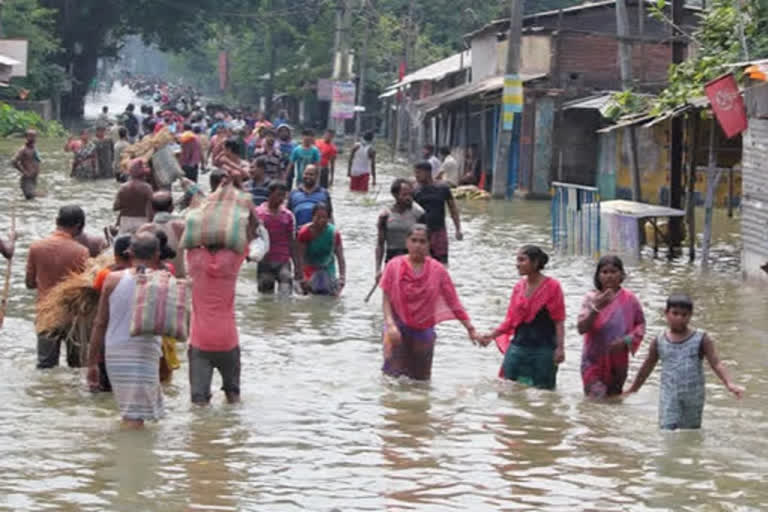Hyderabad: Natural disasters are gripping the country. At a time when states are being hit hard by heavy rains, the flood control operation has become crucial and the government is required to make necessary plans.
The country is being ravaged by the Corona pandemic from one side and natural disasters on the other. Heavy rains and floods are inundating Assam, Maharashtra, Kerala, and other places including Delhi. The heavy rains last month have created havoc in Assam.
This month, the heavy rains in the first week in Mumbai, the financial capital of the country, have inundated the low lying areas bringing the transport and civic life to a standstill. Within twenty- four hours 200mm rainfall was recorded, which is highest in the last 15 years.
On the eighth of this month due to the rains in Idukki district of Kerala, heavy landslides on the houses of the tea garden workers have resulted in loss of lives. It is concerning that in spite of heavy loss to property and lives in different parts of the country in monsoon no advance action is being taken to prevent the floods and the damage.
An annual ritual!
In the past, all the efforts of flood disaster management were focused on the villages. In fact, there is a difference in the nature of damage to the towns and cities and to the villages due to over-flowing of the rivers. Due to the rapid urbanization, the natural flow of the rainwater is being obstructed due to improper planning and unauthorized structures and rainwater harvesting resources are dwindling.
With the result, whenever there are heavy rains and cloudbursts, the intensity of flood is increasing eight times resulting in six-fold increase in volume of water, stagnating in the low-lying areas for many days. This is the reason for the recent floods in Mumbai, Kerala and Delhi.
The current concern is that urban flooding could lead to an outbreak of infectious diseases! Recent floods in Assam have carried large-scale hospital waste, discarded PPE kits, and waste from COVID care centers - causing panic among the people in the submerged areas.
The main cause of flooding in metropolitan areas and cities today is the decades-old sewage system and poor maintenance. Non-clearance of the drainage pipes and accumulation of wastes and rubbish is resulting in heavy flooding of roads even with a small rain. Another major cause of flooding in cities is illegal constructions.
These illegal structures in all cities and towns across the country have become a major obstacle to the free flow of rainwater. The ill-effects of rapid urbanization are unauthorized constructions, the encroachment of ponds and water resources in the cities, inefficient drainage management, etc. These are further worsening the situation.
In order to avoid the threat of floods which has become an unavoidable evil every year, the encroachment of sewage and flood water canals should be curtailed. Every year much before the onset of the monsoon, the drainage nalas should be dredged and cleaned by using modern technology and preventing choking.
Sewage flow should be improved Flood intensity can be controlled by calculating the amount of floodwaters that flow during the monsoon season each year through satellite data and by assessing the impact it will have on the sewer and flood drainage system.
Any amount of effort will be in vain without ensuring that the rainwater is harvested into the ground. If we can harness every drop of rainwater and filter it into the ground, we can stop flooding and recharge the groundwater level.
It is unfortunate that in spite of flood problems every year we are unable to implement an effective plan of action to control it. There are lessons to be learned from the planned sewage system implemented by the Harappan civilization that flourished thousands of years ago. The best procedures and practices followed by the world countries in the management of sewage and floodwaters should be adapted to the conditions here and adopted effectively.
Sewage and flood management plans should be formulated by taking into account the population and geographical conditions of the respective cities and towns. In addition, encroachment on ponds and water sources and indiscriminate digging of the earth should be prevented. Only then will it be possible to control flooding in cities and towns and ensuring comfortable living standards for people.
Also Read:More rainfall likely in Odisha, Telangana, Chhattisgarh today
